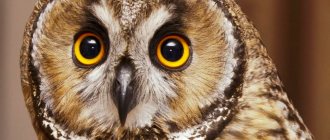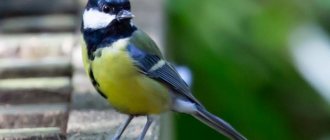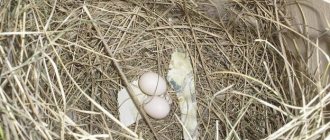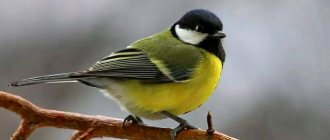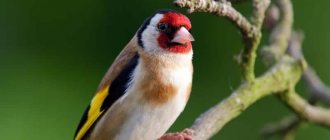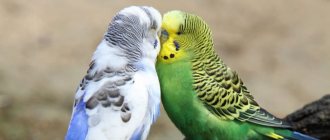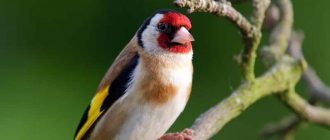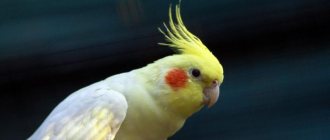Is it possible to keep a raven at home?
Keeping a raven at home is not an easy task. This idea has many advantages and disadvantages, which ones we will consider below.
Pros of keeping a raven:
- intelligent creation;
- can be tamed;
- quickly recognizes the person as his ally (but only one).
Disadvantages of keeping a raven:
- You cannot leave the bird for a long time, otherwise, out of boredom, it may damage something with its beak;
- you need to buy a raven only from a breeder who will provide all the necessary documents;
- These birds are not kept in cages; a spacious aviary or perch is needed;
- the bird must fly, play and walk every day;
- a raven flying around the apartment can break and destroy a lot of furniture;
- You can’t do without working with a raven;
- Poultry nutrition should be balanced, including rabbits, chickens, beef;
- over time, the bird will need a mate, if he lives with you alone, he will consider you his mate, automatically mistaking all other family members for enemies;
- The bird is not suitable for people with families, children, pets, or frequent travelers.
Raven at home
A raven is a friend, which you need to decide consciously whether to make or not. This is an independent bird that has certain needs. If they are not satisfied in the right way, not only the pet, but also its owner may suffer.
Magpie
For example, in Rus' the magpie was not respected. Even various signs associated with this bird did not bode well. Thus, it was believed that if you see a lonely magpie when leaving the house, misfortune will certainly happen; a magpie flew into the yard - expect losses; Finding a magpie on the veranda means theft.
Our ancestors always identified the magpie with gossip, betrayal and all kinds of harm. It was in the body of this bird that witches were believed to appear to people. In some regions of Russia, there was a belief that only the upper half of the witch’s body turns into a magpie, while the lower half remains at home, underground, covered with a trough.
Most often, “magpie-witches” flew in pairs. According to stories, they entered houses and outbuildings, milked cows and caused damage to people. Weremagpies also stole unborn babies from their mother's womb and then ate them. Before this, they bewitched the expectant mothers so that they could not move, and therefore did not offer the slightest resistance. However, everyone knew that if you tear your shirt when meeting a magpie, the witch will find her true appearance.
It was these beliefs that were the reason for the ban on feeding magpies. It was believed that it was especially dangerous to feed these birds near the house.
What conditions does a raven need?
How long does a crow live at home? From fifteen years, but if ideal conditions are created, this period can be twice as long. By the way, males live twice as long as females.
For the bird to be happy, it must be in comfortable conditions.
Nest or cage
The cage is not suitable for keeping a raven at home; if this is allowed, the bird, spreading its wings, can seriously harm itself. In addition, the cramped space of the cage will depress the bird, which requires a lot of daily activity.
Raven Aviary
It is best to make an aviary for the bird, the appropriate size of which will be two by two meters. You can prepare the bait. But, for birds kept in such conditions, they will need at least an hour a day to walk around the room.
If you decide to make an enclosure, then you need to cover it with linoleum or cover it with plastic. Such a surface can be easily cleaned of dirt. It is better to secure the feeder and water bowl so that the bird does not turn them over. Additionally, inside the enclosure you need to install several strong poles on which the raven can sit.
Every day the raven should be allowed to fly freely around the apartment. To prevent the bird from flying away, keep the windows closed. You can shorten the crow's flight feathers a little, it will be able to rise into the air, but it will become difficult for it to fly long distances.
So that the raven can maintain its cleanliness, a container of water is placed for it. It wouldn't hurt to secure it to prevent accidental overturning. There the raven can splash around to his heart's content whenever he feels like it.
Once a month, the bird’s enclosure needs to be disinfected (non-aggressive compounds should be used for this purpose), and cleaned every week.
Hand crow
Bowls, drinking bowls
For birds, it is better to buy a water bowl and feeder that can be securely fixed in a stationary state.
The food and water in these containers must be changed every day. Crows like to hide some of their food. The owner must regularly check the enclosure for its remains, which must be thrown away to prevent the appearance of unpleasant odors.
The room where the aviary with the raven is located requires daily ventilation.
Bedding or perch?
Keeping a black crow at home will require organizing a roost inside the enclosure. A raven will sit on it and maybe sleep.
Take care of the material from which the perch will be made. It should not negatively affect the bird's feet.
Toys
To prevent the bird from getting bored during the day, you need to buy special toys and rattles for it.
general characteristics
Crows are birds from the corvid family. Their body weight is about 600-700 grams.
Externally, black crows resemble their closest feathered relatives, rooks, but look somewhat more massive. The bird has a long, slightly curved beak and graceful legs.
The hooded crow has black feathers on its wings and tail, while the rest of its body is grey. That is why the bird got its name of the same name.
Birds lead a nomadic lifestyle, moving in flocks over distances within the region. Ornithologists note that the intellectual abilities of the crow are more outstanding than those of other representatives of the bird world.
In search of food, she shows ingenuity and caution, and develops primitive strategic plans. In addition, these creatures are characterized by cunning. It has been observed that city crows pick up food from the roadway only when the traffic light turns red.
Birds live from 15 to 70 years. This wide range is due to different living conditions. There is an opinion that crows live up to 300 years, but this is nothing more than a myth.
07/05/2017 , Posted in Raven Comments No comments
Diet of corvids
Feeding a raven
In order for the bird to live comfortably in captivity, the owner must feed it according to the diet suggested below. It replicates as closely as possible the diet of a bird in the wild, so it will be the best for maintaining its health.
Meat
At different times of the year, crows consume different amounts of meat. For this purpose, they catch animals that are sick or weakened.
What kind of meat can you give to a raven:
- beef;
- quail;
- veal;
- rabbits;
- chickens that are no more than a day old;
- mice and rats.
Mice for feeding crows
The last crows need to be supplied with wool and bones. This food is rich in microelements, starts digestion, and promotes the production of necessary enzymes.
In order to protect your pet, chicken meat should be given boiled. This does not add any benefit, but will protect the bird from various diseases. Occasionally you can treat the raven to elk or venison. It is better to avoid fatty pork or lamb.
It is better to give the bird fresh, possibly chilled, meat. It will be healthier than what has already been frozen.
Insects and more
Insects make up the lion's share of a crow's diet when they live in the wild. Therefore, at home you should include insects in your daily menu.
Locust
What insects can be offered to the bird:
- different types of cockroaches;
- butterfly caterpillars;
- locusts;
- ant eggs;
- beetles;
- dragonflies;
- spiders.
Occasionally, you can treat your pet to fatty maggots or mealyworms.
It is best to raise insects at home yourself, because buying them at a pet store is not a cheap pleasure.
If you catch insects yourself, it is better to freeze them before giving them to the bird. This way you can remove parasites. You just can’t store thawed specimens, they spoil very quickly.
Remember that giving the crow those cockroaches that can be caught in the apartment is strictly prohibited.
Caterpillar
Fish and seafood
You can give your pet fish occasionally, no more than once a week. It is better to treat the raven with low-fat varieties of fish.
Which fish is suitable:
- pike;
- zander;
- ruff;
- chum salmon;
- perch;
- tilapia;
- shrimps;
- squid;
- tadpoles.
Shrimp
The bird can be given fish caught in the seas or rivers. But, you need to remember that sea varieties contain a large amount of mercury, which is unsafe. Before serving, the fish must be frozen; after this procedure, there is no need to gut the fish.
Eggs
The bird can be treated to raw quail eggs. It is better to avoid chicken ones, they are less healthy and may contain pathogens.
Small crows can be given one quail egg every two days, for large crows you can give one egg a day.
Skim cheese
This fermented milk product must be included in the poultry diet. It contains vitamins and valuable microelements. If you buy cottage cheese, choose the low-fat variety.
An adult crow can be given from a teaspoon to a tablespoon of cottage cheese per day (depending on the size of the individual).
Skim cheese
Berries, fruits and vegetables
During the season when vegetables and fruits ripen, they must be part of the raven's daily menu. Your pet will especially appreciate wild berries, which he is accustomed to in the wild.
What fruits and vegetables can you give:
- melons and watermelons;
- strawberries and cherries;
- peaches and raspberries;
- dogwood and cherry;
- gooseberries and grapes.
Poultry carrots must be given grated, otherwise they will not be digested. There is no need to treat your pet to citrus fruits; they are unusual for him and can cause allergies.
Potatoes, tomatoes and mushrooms do not need to be given to the bird often. They are more likely to do harm than good.
Cherries
Nuts and seeds
Nuts have a high level of fat content, they should be given in moderation, one at a time (not every day). You can offer the crow pine nuts, almonds, coconut, brazil, cashews.
As for seeds, the crow will be pleased with sunflower and pumpkin seeds, as well as spruce and pine cones.
Porridge and sprouts (cereals)
To diversify a bird's diet, you cannot do without including porridge in its diet. These dishes are prepared from brown rice, millet, and buckwheat.
To prepare dinner, crow and cereals need to be steamed; it is better to do this overnight. This way the porridge will retain all the beneficial microelements.
In raw form, you can give the bird milk millet, wheat and oats. Grains that have already sprouted should be offered with caution; they can provoke a hormonal surge.
Brown rice
Green parts of plants
Not every bird will eat this food, but you can offer it. Dandelion leaves, branches of fruit trees (young), and needles are suitable for this purpose. You can freeze or scald nettles with boiling water and give them to the crow.
In addition, you can make small bouquets of clover and woodlice and hang them inside the cage. You should not give parsley or dill to a crow; they contain too many essential oils.
Dry food
Dry cat and dog food is not suitable for feeding crows at home. You can buy special mixtures for insectivorous birds. The main thing is to ensure that birds eating dry food have free access to a sufficient amount of water.
Drink
Filtered water
For drinking, you can pour filtered or purchased water into the crow; spring and well water are suitable. It is better to discard tap water that has not passed the filter.
To prevent the bird from soaking its toys in the water bowl, you need to place it and a nipple drinker in the enclosure.
Prohibited Products
Numerous reviews from raven owners note that at home birds should be fed strictly in accordance with the rules.
You should not give the bird:
- alcoholic drinks;
- fried and salted;
- sweet;
- fat;
- bread and pasta;
- dairy;
- canned foods;
- semi-finished products and sausages;
- juices from the store;
- sweet carbonated water, tea, coffee.
Bread
If you treat a raven with products from this list, even periodically, its health can be seriously affected.
Feeding
Feeding should be given in moderation so as not to harm the pet. It is best to give vitamins strictly as prescribed by your veterinarian.
Sepia
Is a source of calcium. This product can be attached to the mesh of the aviary, then the bird can periodically peck at it. If she ignores sepia, you can grind it into powder and add a teaspoon to your food.
Spirulina, kelp
These substances improve the bird's plumage and strengthen the immune system. Algae is added to other food and given from one third to one fourth teaspoon per day.
Kelp
Clay
Clay acts as a prebiotic and sorbent; birds can be given its blue and white varieties.
Eggshell
When answering the question of what to feed crows at home, we must not forget about eggshells, which contain valuable calcium carbonate. The shell can be ground in a coffee grinder or given as a whole along with the egg. For a small individual, you need to offer 0.1 teaspoon of shell daily.
Gammarus, daphnia
These are dried crustaceans that can be purchased at a pet store. They can only be given to the bird as a reward during training.
Pollen
Before including it in the diet on an ongoing basis, you need to give your pet a small amount of pollen so that it does not cause allergies. If the bird tolerates the new product well, it can be added to the mash at the rate of 7 lumps for small birds and 10-2 for large ones.
Pollen
Pollen is given for three months, then a break is taken for the same period.
Honey
You can give honey twice a week, in an amount not exceeding one teaspoon.
Chalk
As a source of calcium and phosphorus, chalk is offered to birds daily. It can be placed between the rods. The main thing is to buy special food species.
Milk thistle
Given to support liver function. Milk thistle is bought in seeds, which are crushed and added to food every day, a teaspoon.
Bone flour
This type of feeding is used as a source of phosphorus and calcium. It can be added to the mash in an amount of no more than half a teaspoon per day.
Bone flour
Sulfur
Sulfur should be given during the period when the bird begins to actively moult. It is added to food in small quantities for two weeks, once a day.
Yeast
This is a source of B vitamins. It is better to buy them at the pharmacy, but give them only after the recommendation of a veterinarian, otherwise there is a risk of developing mycoses.
Gastroliths
Gastroliths are small pebbles used to abrade the food that has entered the bird’s stomach. For this purpose, a bowl with a small fraction of pebbles is placed in the enclosure. The birds themselves will understand what to do with it.
How to tame a raven?
If you don't know how to tame a crow at home, check out the following tips.
Raven training
Features of training and accustoming crows:
- It is best to take a crow between two and three weeks old. Young individuals are better tamed and amenable to training. Males are very active, but can be aggressive. Females are attached to their owner and are calm.
- You need to stay with the chick for about a month and a half, feed it, and clean the enclosure.
- If you give your bird at least three hours a day, it will quickly recognize you as a friend.
- When the chick learns to stand on its legs, they are put on fetters. When he gets used to them, you can fasten a strap to them and go for walks in the fresh air.
- Every day you can train for up to two to three hours.
Crows believe that they can only have one owner. If all family members take an equal part in raising the pet, he will trust everyone equally.
Walk for the Raven
What do tits eat?
As for the set of feeds, the Russian Bird Conservation Union for tits and other insectivores recommends unsalted lard of any animal, unroasted sunflower seeds (they are very high in calories) and pumpkin (to a lesser extent - watermelon seeds, melon seeds and white bread crumbs). They do not eat traditional millet or waste gray bread.
Interesting materials:
Is it possible to abruptly stop Bisoprolol? Is it possible to paint on fabric with acrylic paints? Can the baking sleeve be placed on a baking sheet? Is it possible to change your color from natural dark to lighter? Is it possible to call Lugacom from Vodafone? Is it possible to plant trees yourself? Is it possible to defend yourself in court? Can I remove my nail extensions myself? Is it possible to plant garlic next to cucumbers? Is it possible to plant strawberries under a tree?
Prevention and treatment of diseases in crows
Ornithologists deal with the health of birds; unfortunately, it is not easy to find an experienced specialist in this profile. Therefore, crow owners, if any problems arise, usually turn to a regular veterinarian.
It is better to take a pet from a breeder to be sure of the health of your pet and the absence of infectious pathologies.
Crows can suffer from reovirus and some other diseases. If you notice that the bird has become lethargic and refuses food, be sure to show it to a specialist.
Answers to frequently asked questions about keeping ravens at home
In this section you will find answers to popular questions about keeping crows at home.
Is the raven a carrier of dangerous diseases?
Crow on a Dumpster
Crows can carry dangerous diseases if they live outdoors and feed on waste from landfills. If you are adopting a chick from a specialized pet, there is no need to worry. The main thing is to periodically give the bird anthelmintic drugs.
What to do if a raven shows signs of obesity?
In this case, you need to reduce the amount of fatty foods in the bird’s diet and increase the pet’s activity. To do this, you can let him fly more often, add more plant foods to his diet.
Is it possible to teach a raven to speak?
If you have one raven, you can teach him some words that contain the letter “r”.
How to achieve breeding of crows at home?
It is difficult to ensure that a raven finds a mate in captivity. These birds are quite picky in everything that concerns a possible partner.
Pair of ravens
How long does a crow live at home?
On average, from twenty to thirty years, depending on the conditions of detention.
Appearance and behavior characteristics
The body weight of a raven can reach from eight hundred grams to one and a half kilograms. Moreover, its body length is from sixty to seventy centimeters, and its wingspan is from one hundred and twenty to one hundred and fifty centimeters. Other appearance features include:
- feathers on the throat elongated in the form of a beard;
- sharp, high and very massive beak;
- wedge-shaped beak;
- rather narrow but long wings;
- sharp flapping of the wing during flight;
- monochromatic body coloring;
- black plumage with greenish underneath and a violet or bluish tint underneath;
- in crows, the plumage has a matte black color without shine;
- the iris of the eyes is dark brown;
- the voice is trumpet and loud.
In flight, crows look like birds of prey and are even capable of performing some maneuvers. They know how to move well on the ground, have caution and patience.
In nature, they live in pairs and can only unite with their relatives for the night.
Reviews from owners about keeping a raven at home
Crows do not live in every home. Despite the fact that the raven is not the most popular bird to keep at home, you can find reviews from the owners of this bird on the Internet.
Owner reviews about the crow:
- males are overly aggressive;
- they scream very loudly whenever they feel like it;
- females are calm and friendly; it is better to keep them in captivity;
- require careful selection of diet.
Keeping a raven at home is not an easy task. The bird has a freedom-loving and capricious character, it needs to be fed in a special way, and comfortable living conditions are important for it. But, if you win the love of this bird, it will recognize you as an equal and will enjoy spending time in your company.
Habitats
Crows are unpretentious and therefore can be found in forests, deserts, alpine tundra and even on Arctic coasts. They choose coniferous or deciduous forests, open areas near water bodies, and mountain landscapes. They settle on the outskirts of small settlements and in abandoned villages.
In large cities, these black birds can only be found in the North-West of Russia, some cities in America, and Ulaanbaatar. This is explained by the fact that crows avoid humans.
In winter they feed on garbage or carrion, so they look for food in landfills after picnics, near meat processing plants, fur farms, and roadsides. They search for mouse holes and chase small rodents.

